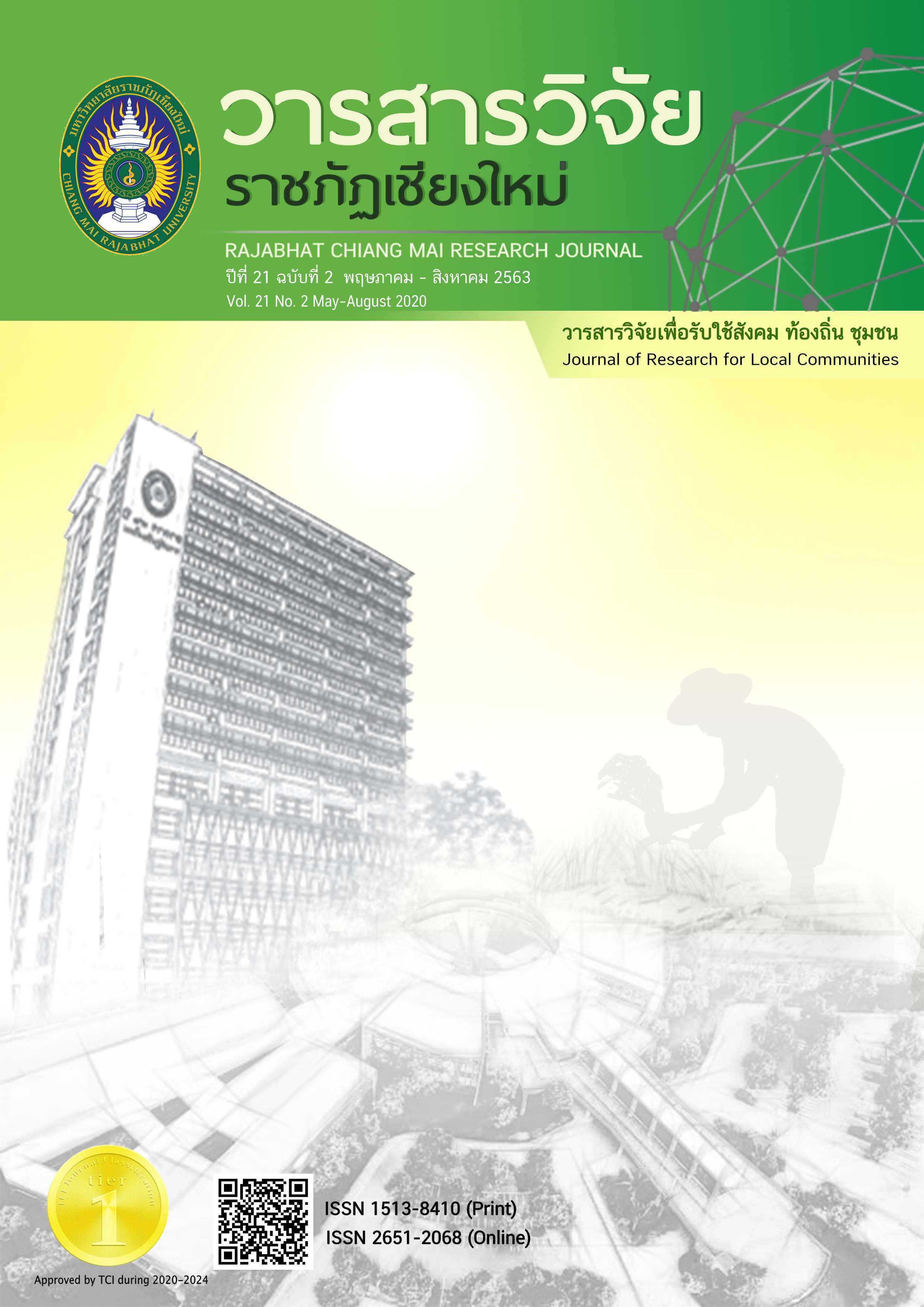The Development of Pandanus Salted Egg Product with White Clay Filler of Occupation Group at Thanonyai Sub-district, Mueang District, Lop Buri Province
DOI:
https://doi.org/10.14456/rcmrj.2020.238884Keywords:
Product development, Pandanus salted egg with white clay filler, Participation action researchAbstract
The purposes of this participation action research were to: 1) study the state and problems of the development of pandanus salted egg product with white clay filler of Occupation Group at Thanonyai Sub-district, Mueang District, Lop Buri Province; and 2) develop pandanus salted egg product with white clay filler of Occupation Group at Thanonyai to be distinctive product. The samples used in the study, selected by purposive sampling, were 30 members affiliated to pandanus salted egg product with white clay filler of Occupation Group, two community leaders, two academic staff in food science and marketing, and 400 product consumers, drawn by accidental sampling. The Mixed Method Research (MMR) including observation, in-depth interview, questionnaire, focus group and experiment was employed for data collection. The quantitative data were systematically analyzed to determine percentage, mean and standard deviation, and also qualitative data to capture categories using a content analysis and concluding the experimental results. According to the results of the study, the serious problems of pandanus salted egg product with white clay filler were too salty taste, lack of pandanus aroma, and lack of developing its own unique brand, therefore it did not attract consumers and tourists to buy as souvenirs. As for the experimental work, using raw materials and process according to the advice of the food science academic staff to develop pandanus salted egg product with white clay filler to be distinctive product, the findings revealed that: 1) pandanus salted egg product with white clay filler had a mellow taste, and not too salty; 2) the distinctive feature of product was the aroma of pandanus leaves penetrating into its meat; and 3) brand name should refer to source of production; its logo and slogan should be attractive customers and be easy to remember.
Downloads
References
Changkhit, N. (2007). Chaiya Salted Egg Product Development, Surat Thani Province. Surat Thani: Surat Thani Rajabhat University. (In Thai)
Kachornkittiya, N. (2007). Community Enterprise Management: Effective Means to Sustainable Success. Journal of Yala Rajabhat University, 2(2), 150-162. (In Thai)
Kandum, S., (2018). Factors Affecting the Success of Community Enterprise: A Case Study of Salted Egg of Ban Dong Pa Sak, Maesai District, Chiang Rai Province. (Master of Business Administration Thesis, M.B.A. General Management, Chiang Rai Rajabhat University). (In Thai)
Khunthongchan, S., (2017). Business Research. Bangkok: Se-Education. (In Thai)
Kotler, P., & Keller, K.L. (2012). Marketing Management. (14thed.). New York: Pearson Education.
Lohsuwan, A. (2017). Community Leader of Thanon Yai Sub District. Interview. (In Thai)
Puangpejara, K., Puangpejara, S., Kumnuanchai, S., & Sukerd, S. (2016) The Marketing Management of Promotion by Community’s Participation of Rai San Fan Community Enterprise, Nikhom Sang Ton-eng Sub- District, Mueang District, Lop Buri Province. NIDA Development Journal, 56(4), 96-120. (In Thai)
Puangpejara, K., Puangpejara, S., & Kumnuanchai, S. (2018). The Guidelines for Marketing Development of Pandanus Salted Egg Business: A Case Study of Ban Khokputsa Agricultural Housewife Group Community Enterprise, Moo 2, Thanonyai Sub-District, Muang District, Lop Buri Province. Veridian E-Journal, Silpakorn University, 11 (2), 1441-1454. (In Thai)
Sinjaru, T. (2017). Research and Analyze Statistical Data with SPSS and AMOS. (17thed.). Bangkok: Business R & D. (In Thai)
Suwankham, T. (2017). A Group Member of Pandanus Salted Egg, Thanon Yai Agricultural Housewife Group. Interview. (In Thai)
Waiwanitkun, N. & Udomsri, C. (2011). Business Research Methodology. (21sted.). Bangkok: Chulalongkorn University Printing House. (In Thai)
Downloads
Published
How to Cite
Issue
Section
License
1. Articles, information, content, images, etc published in the “Community and Social Development Journal” are copyrighted by the Community and Social Development Journal, Chiang Mai Rajabhat University. In order to properly distribute the articles through print and electronic media, the authors still hold the copyright for the published articles under the Creative Commons Attribution (CC BY) license, which allows the re-distribution of the articles in other sources. References must be made to the articles in the journal. The authors are responsible for requesting permission to reproduce copyrighted content from other sources.
2. The content of the articles appearing in the journal is the direct responsibility of the article authors. The editorial board of the journal does not necessarily agree with or share any responsibility.














